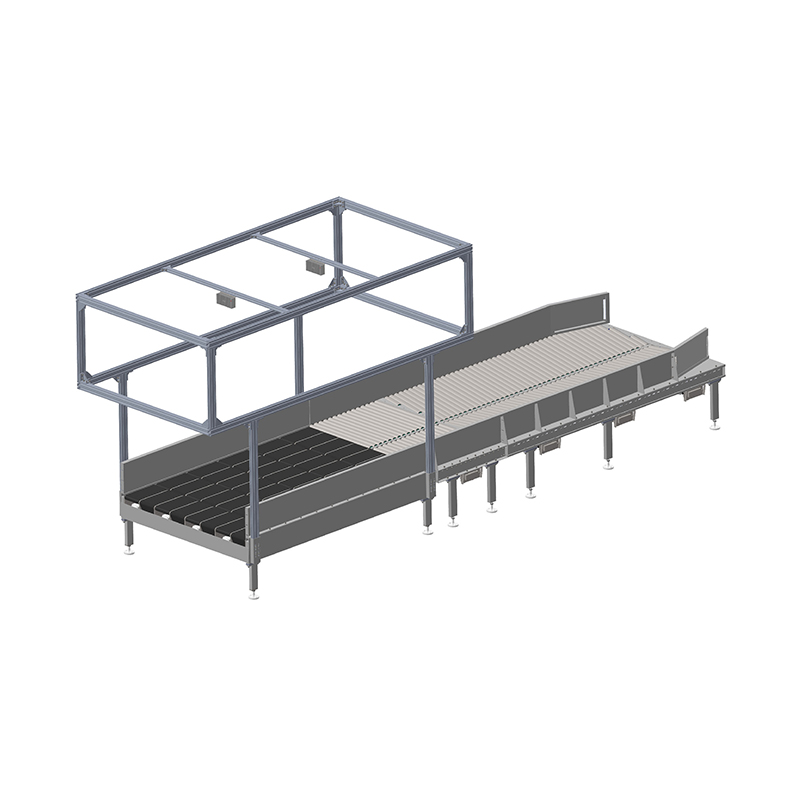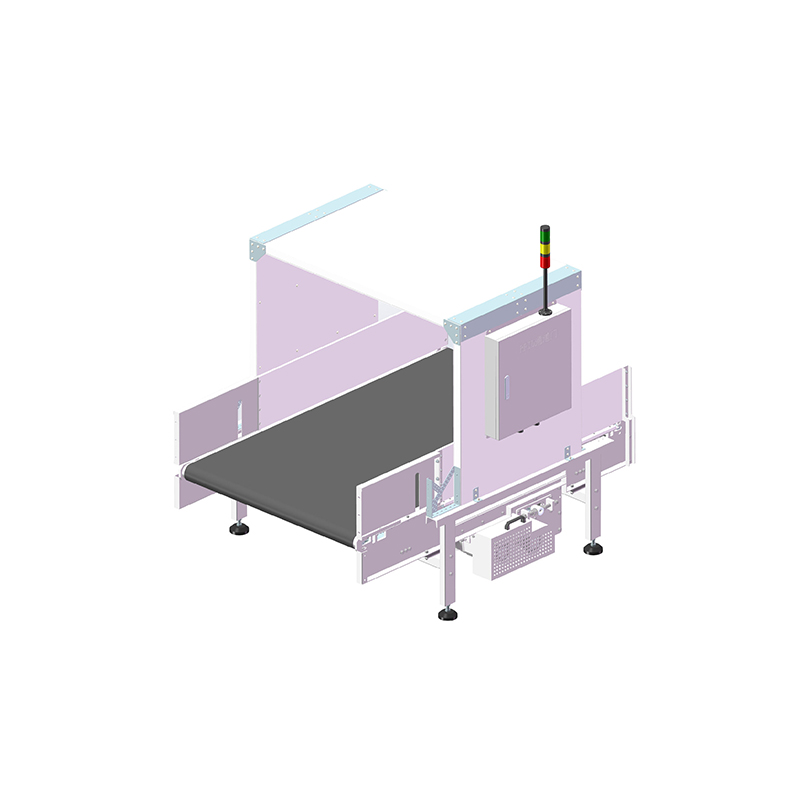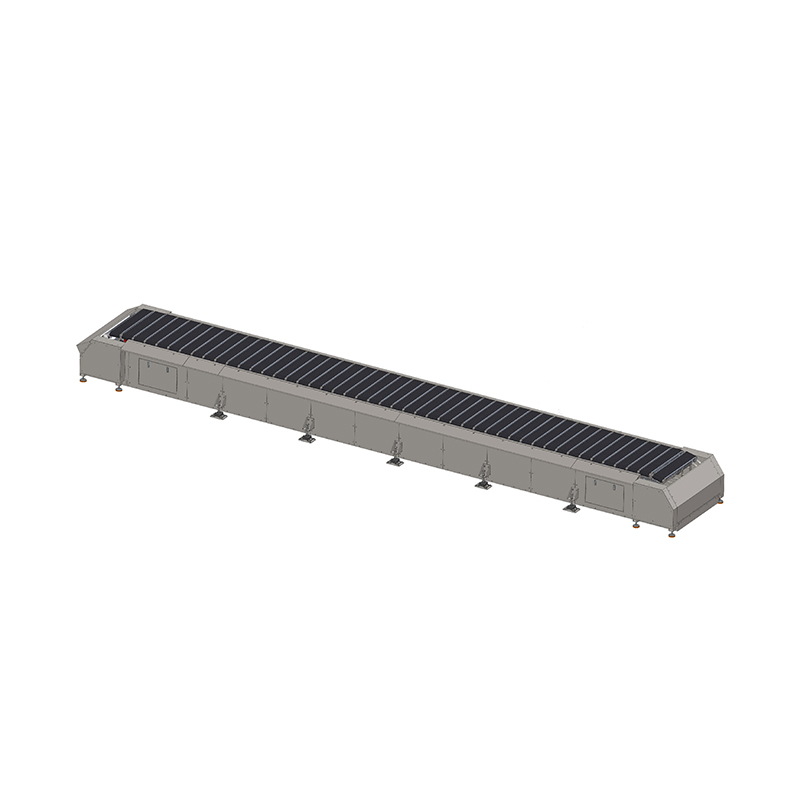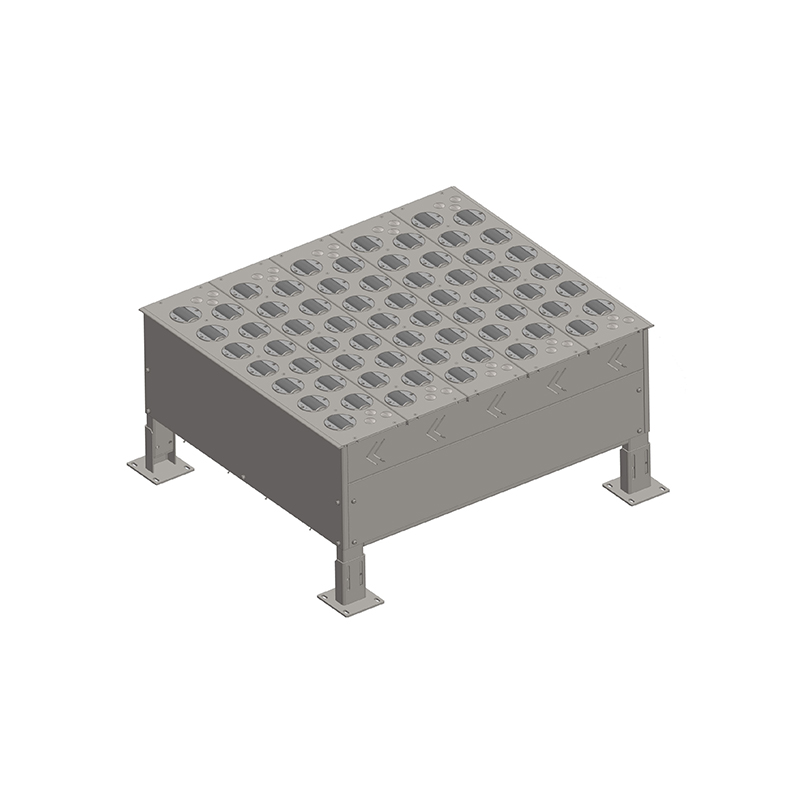How to solve the problem of belt conveying and sorting? Intelligent system solutions give the answer!
Release Time : 2025-07-21
In the field of modern industrial production and logistics, efficient and accurate material conveying and sorting are the key links to ensure the overall smoothness of operations and enhance competitiveness. As a core tool, the intelligent upgrade of belt conveying and sorting equipment has become an inevitable trend in the development of the industry. This article will deeply explore the intelligent system solutions for belt conveying and sorting equipment, analyze its key technologies, application advantages and future development directions.
Key technologies of intelligent system solutions
1. Sensor technology
Sensors are the "sensing organs" of intelligent systems and play a vital role in belt conveying and sorting equipment. By installing different types of sensors on the belt, such as photoelectric sensors, pressure sensors, speed sensors, etc., key information such as the location, quantity, weight, and speed of the material can be obtained in real time. For example, photoelectric sensors can accurately detect whether the material has reached the specified position and provide accurate trigger signals for subsequent sorting operations; pressure sensors can measure the weight of the material to help determine whether the material meets the specification requirements and ensure the accuracy of sorting.
2. Automation control technology
Automation control technology is the "brain" of the intelligent system. It accurately controls the belt conveying and sorting equipment based on the data collected by the sensor. The programmable logic controller (PLC) is a commonly used automation control device. It can control the start and stop of the belt, speed adjustment, and the action of the sorting mechanism in real time according to the preset program. For example, when the sensor detects that the material has arrived at the sorting port, the PLC will quickly issue an instruction to control the sorting mechanism to accurately sort the material into the corresponding channel to achieve efficient automatic sorting.
3. Machine vision technology
Machine vision technology gives the intelligent system "visual" capabilities, which can realize the rapid identification and analysis of the appearance, shape, color and other characteristics of the material. By installing a high-definition camera on the equipment, collecting the image information of the material, and using image processing algorithms and deep learning models to analyze the image, the type, quality and other information of the material can be accurately judged. For example, in food sorting, the machine vision system can identify defective food and sort it out to ensure the quality of the product.
4. Communication technology
Communication technology is the "nerve" of the intelligent system, realizing information interaction and collaborative work between various devices. Through wired or wireless communication methods, such as Ethernet, Wi-Fi, Bluetooth, etc., sensors, controllers, host computers and other devices are connected into an organic whole. In this way, operators can monitor the operating status of the equipment in real time on the host computer, adjust the parameters of the equipment remotely, and realize centralized management and control of the entire conveying and sorting system.
Application advantages of intelligent system solutions
1. Improve production efficiency
The intelligent system can realize the automatic operation of belt conveying and sorting equipment, reduce manual intervention, and greatly shorten the conveying and sorting time of materials. At the same time, through precise control and rapid response, the equipment can work continuously and stably, improving the overall production efficiency. For example, in e-commerce logistics centers, intelligent belt conveying and sorting equipment can quickly process a large number of parcels and accurately sort the parcels to different distribution areas, greatly shortening the processing time of orders.
2. Improve sorting accuracy
Using sensor technology and machine vision technology, the intelligent system can perform all-round detection and identification of materials, avoiding possible errors in manual sorting. Whether it is the specification, model or quality of the material, it can be accurately judged and sorted, which improves the accuracy and consistency of sorting. For example, in the production of electronic products, the intelligent sorting system can accurately sort out parts of different models to ensure the smooth progress of the production process.
3. Reduce operating costs
Automated and intelligent operation methods reduce labor demand and labor costs. At the same time, the intelligent system can monitor and warn the operating status of the equipment in real time, discover the hidden dangers of equipment failure in time, and perform maintenance and maintenance in advance, reducing the downtime and maintenance costs of the equipment. In addition, by optimizing the material conveying path and sorting strategy, the intelligent system can also reduce energy consumption and further reduce operating costs.
4. Enhance system flexibility
The intelligent system has good scalability and flexibility, and can be quickly adjusted and configured according to different production needs and material characteristics. For example, when the type of production products changes, only a simple modification of the program and parameters of the intelligent system is required to achieve the sorting task of different materials, without large-scale transformation and upgrading of the equipment, which improves the adaptability and versatility of the system.
Application case analysis
Take a large automobile manufacturing company as an example. The company adopted an intelligent system solution in the conveying and sorting process of parts. By installing sensors and machine vision systems on the belt conveyor line, the position, shape and size of parts can be obtained in real time. The automatic control system accurately controls the running speed of the belt and the action of the sorting mechanism based on this information, and accurately sorts parts of different models to the corresponding workstations. At the same time, communication technology realizes information sharing and collaborative work between various devices. Operators can monitor the operating status of the equipment in real time through the host computer and adjust production parameters in time. After implementing the intelligent system solution, the company's parts sorting efficiency has increased by 50%, and the sorting accuracy has reached more than 99%, greatly improving production efficiency and product quality.
Future development direction
1. Deep integration with artificial intelligence
In the future, the intelligent system of belt conveying and sorting equipment will be further deeply integrated with artificial intelligence technology. By introducing more advanced deep learning algorithms and big data analysis technologies, more accurate identification and analysis of material characteristics can be achieved, sorting strategies and equipment operating parameters can be optimized, and the intelligence level and decision-making ability of the system can be improved.
2. Realize full-process intelligence
In addition to the conveying and sorting links, the intelligent system will extend to the entire production and logistics process, realizing the intelligent management of the entire process from raw material procurement, production and processing to product distribution. By integrating with other information systems of the enterprise, data sharing and collaboration can be achieved, and the overall operational efficiency and competitiveness of the enterprise can be improved.
3. Green and sustainable development
In the context of increasing environmental awareness, future intelligent systems will pay more attention to green and sustainable development. By optimizing the energy management of equipment, adopting energy-saving technologies and renewable energy, the energy consumption and carbon emissions of equipment can be reduced. At the same time, the recycling and reuse of equipment will be strengthened to reduce resource waste and achieve coordinated development of economy and environment.
The intelligent system solution of belt conveyor and sorting equipment is an important development direction in the field of modern industrial production and logistics. By applying key technologies such as sensor technology, automation control technology, machine vision technology and communication technology, the intelligent system can improve production efficiency, improve sorting accuracy, reduce operating costs and enhance system flexibility. With the deep integration with artificial intelligence, the realization of full-process intelligence and the promotion of green and sustainable development, the intelligent system of belt conveyor and sorting equipment will play a more important role in the future and create greater value for enterprises.
Key technologies of intelligent system solutions
1. Sensor technology
Sensors are the "sensing organs" of intelligent systems and play a vital role in belt conveying and sorting equipment. By installing different types of sensors on the belt, such as photoelectric sensors, pressure sensors, speed sensors, etc., key information such as the location, quantity, weight, and speed of the material can be obtained in real time. For example, photoelectric sensors can accurately detect whether the material has reached the specified position and provide accurate trigger signals for subsequent sorting operations; pressure sensors can measure the weight of the material to help determine whether the material meets the specification requirements and ensure the accuracy of sorting.
2. Automation control technology
Automation control technology is the "brain" of the intelligent system. It accurately controls the belt conveying and sorting equipment based on the data collected by the sensor. The programmable logic controller (PLC) is a commonly used automation control device. It can control the start and stop of the belt, speed adjustment, and the action of the sorting mechanism in real time according to the preset program. For example, when the sensor detects that the material has arrived at the sorting port, the PLC will quickly issue an instruction to control the sorting mechanism to accurately sort the material into the corresponding channel to achieve efficient automatic sorting.
3. Machine vision technology
Machine vision technology gives the intelligent system "visual" capabilities, which can realize the rapid identification and analysis of the appearance, shape, color and other characteristics of the material. By installing a high-definition camera on the equipment, collecting the image information of the material, and using image processing algorithms and deep learning models to analyze the image, the type, quality and other information of the material can be accurately judged. For example, in food sorting, the machine vision system can identify defective food and sort it out to ensure the quality of the product.
4. Communication technology
Communication technology is the "nerve" of the intelligent system, realizing information interaction and collaborative work between various devices. Through wired or wireless communication methods, such as Ethernet, Wi-Fi, Bluetooth, etc., sensors, controllers, host computers and other devices are connected into an organic whole. In this way, operators can monitor the operating status of the equipment in real time on the host computer, adjust the parameters of the equipment remotely, and realize centralized management and control of the entire conveying and sorting system.
Application advantages of intelligent system solutions
1. Improve production efficiency
The intelligent system can realize the automatic operation of belt conveying and sorting equipment, reduce manual intervention, and greatly shorten the conveying and sorting time of materials. At the same time, through precise control and rapid response, the equipment can work continuously and stably, improving the overall production efficiency. For example, in e-commerce logistics centers, intelligent belt conveying and sorting equipment can quickly process a large number of parcels and accurately sort the parcels to different distribution areas, greatly shortening the processing time of orders.
2. Improve sorting accuracy
Using sensor technology and machine vision technology, the intelligent system can perform all-round detection and identification of materials, avoiding possible errors in manual sorting. Whether it is the specification, model or quality of the material, it can be accurately judged and sorted, which improves the accuracy and consistency of sorting. For example, in the production of electronic products, the intelligent sorting system can accurately sort out parts of different models to ensure the smooth progress of the production process.
3. Reduce operating costs
Automated and intelligent operation methods reduce labor demand and labor costs. At the same time, the intelligent system can monitor and warn the operating status of the equipment in real time, discover the hidden dangers of equipment failure in time, and perform maintenance and maintenance in advance, reducing the downtime and maintenance costs of the equipment. In addition, by optimizing the material conveying path and sorting strategy, the intelligent system can also reduce energy consumption and further reduce operating costs.
4. Enhance system flexibility
The intelligent system has good scalability and flexibility, and can be quickly adjusted and configured according to different production needs and material characteristics. For example, when the type of production products changes, only a simple modification of the program and parameters of the intelligent system is required to achieve the sorting task of different materials, without large-scale transformation and upgrading of the equipment, which improves the adaptability and versatility of the system.
Application case analysis
Take a large automobile manufacturing company as an example. The company adopted an intelligent system solution in the conveying and sorting process of parts. By installing sensors and machine vision systems on the belt conveyor line, the position, shape and size of parts can be obtained in real time. The automatic control system accurately controls the running speed of the belt and the action of the sorting mechanism based on this information, and accurately sorts parts of different models to the corresponding workstations. At the same time, communication technology realizes information sharing and collaborative work between various devices. Operators can monitor the operating status of the equipment in real time through the host computer and adjust production parameters in time. After implementing the intelligent system solution, the company's parts sorting efficiency has increased by 50%, and the sorting accuracy has reached more than 99%, greatly improving production efficiency and product quality.
Future development direction
1. Deep integration with artificial intelligence
In the future, the intelligent system of belt conveying and sorting equipment will be further deeply integrated with artificial intelligence technology. By introducing more advanced deep learning algorithms and big data analysis technologies, more accurate identification and analysis of material characteristics can be achieved, sorting strategies and equipment operating parameters can be optimized, and the intelligence level and decision-making ability of the system can be improved.
2. Realize full-process intelligence
In addition to the conveying and sorting links, the intelligent system will extend to the entire production and logistics process, realizing the intelligent management of the entire process from raw material procurement, production and processing to product distribution. By integrating with other information systems of the enterprise, data sharing and collaboration can be achieved, and the overall operational efficiency and competitiveness of the enterprise can be improved.
3. Green and sustainable development
In the context of increasing environmental awareness, future intelligent systems will pay more attention to green and sustainable development. By optimizing the energy management of equipment, adopting energy-saving technologies and renewable energy, the energy consumption and carbon emissions of equipment can be reduced. At the same time, the recycling and reuse of equipment will be strengthened to reduce resource waste and achieve coordinated development of economy and environment.
The intelligent system solution of belt conveyor and sorting equipment is an important development direction in the field of modern industrial production and logistics. By applying key technologies such as sensor technology, automation control technology, machine vision technology and communication technology, the intelligent system can improve production efficiency, improve sorting accuracy, reduce operating costs and enhance system flexibility. With the deep integration with artificial intelligence, the realization of full-process intelligence and the promotion of green and sustainable development, the intelligent system of belt conveyor and sorting equipment will play a more important role in the future and create greater value for enterprises.








